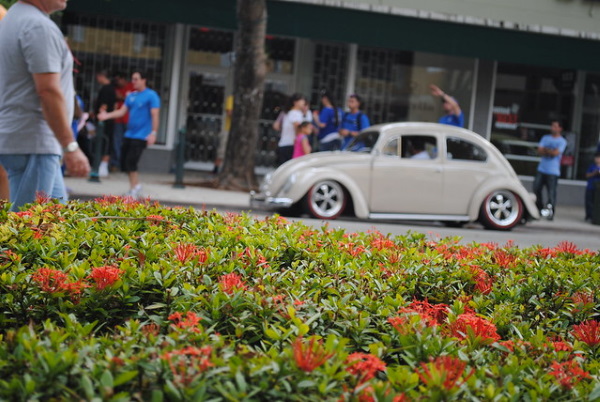A new study shows that planting urban plots with wildflowers – so-called ‘flower strips’ – boosts biodiversity among bees, bugs and other insect pollinators.
Wanna Bees
When was the last time you saw a meadow bursting with wildflowers? That long, huh… and we mean in real life, not on your desktop, laptop or smartphone’s home screen background. Indeed, flowering meadows were once everyone’s background – urban, rural or in-between. Now a new study published in the open-access Journal of Hymenoptera Research confirms that so-called “flower strips” planted in the midst of urban infrastructure not only boost our spirits, they can boost the viability of many species of insects including essential pollinators from wild bees to domesticated honeybees. (images via Jorge de la Llama)
“One-year-old flower strips already support a quarter of a city’s bee species” is the rather lengthy title of the study. Researchers from the University of Munich led by Prof. Susanne S. Renner and Michaela M. Hofmann investigated the role flower strips play in addressing and even redressing the decline of hundreds of species of bees in Germany alone. (images via Yu Morita)
Flower Power
It’s no coincidence that the growth of urban areas inversely correlates with the decline of bees and other insects over time. If only there were some way to provide these beneficial species with the flowered patches they need for shelter and sustenance such as, say planting more flowers. As a matter of fact, a rigorous study on the efficacy of flower strips is just what it takes to change hearts and minds these days. (image via Forest and Kim Starr)
Hive Been Watching You
Though they may not know it (who are we kidding… they’re bees!), threatened plant pollenators have an ally in the EU, which as a matter of policy supports a wide range of “greening measures”. One of these is the establishment of “flower strips”; patches and plots of unused urban land planted with native flowering plants. The study by the University of Munich research team set out to review the viability of local bee populations at nine urban Munich flower strips (shown above) after one full year. The results should indicate whether the EU is getting the most buzz for their bucks. (image via Journal of Hymenoptera Research)
Got “nose” tolerance for noisome natural fragrances? Check out Scents Of Doubt: The World’s 12 Smelliest Plants!
